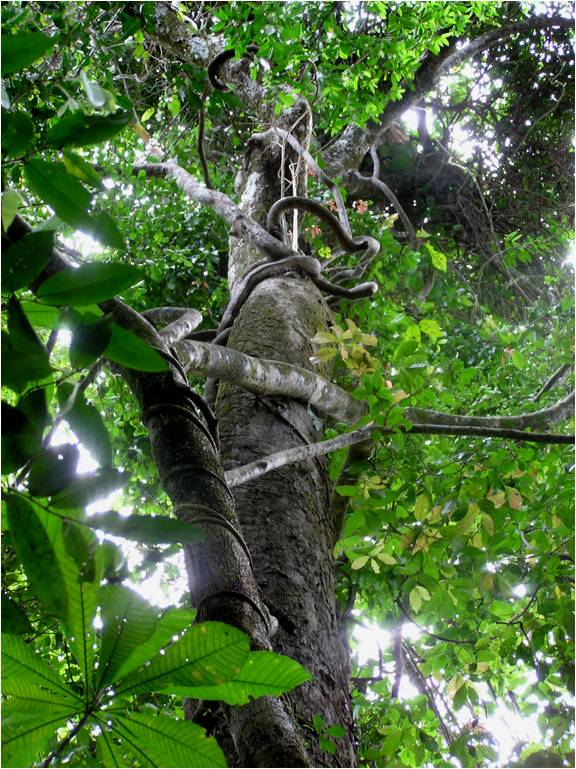Twisted Tropics: Growth of Vines Imperils Ecosystem

Trees are the backbone of a forest, but in tropical forests throughout the Americas, trees appear to be losing ground to the woody vines that climb them in a race to reach the sunlight above. This shift could have important implications for tropical ecosystems and for the globe, according to researchers.
"This is the first major structural change in tropical ecosystems that we have witnessed. That is key," said Stefan Schnitzer, an associate professor at the University of Wisconsin in Milwaukee. Schnitzer is one of the two researchers who pulled together evidence from eight studies that, collective, show a pattern of woody vine growth in American tropical and subtropical forests.
"That is going to have cascading effects on things like species diversity, tropical forest functioning in carbon storage and whole forest water use — really important and practical things that will change the way these forests work," said Schnitzer, who is also a research associate at the Smithsonian Tropical Research Institute in Panama.
Evidence climbs
The first evidence of this pattern emerged in 2002, when a 23-year study showed that woody vines were becoming more abundant relative to trees in the Amazon rain forest, northwest South America and Central America. Since then, other studies have shown an increase in woody vines in Panama, French Guiana and the Bolivian Amazon. For instance, on Barro Colorado Island in Panama, the relative abundance of vines in tree crowns has more than doubled over the past 40 years.
In places like these, the vines are native species, but farther north in subtropical places such as Florida and South Carolina, invasive species, like the infamous kudzu, contribute to the problem, Schnitzer said.
The colder weather of higher latitudes keeps the vines in check, write Schnitzer and his fellow researcher, Frans Bongers from Wageningen University in The Netherlands, in an article published online today (Feb. 14) in the journal Ecology Letters.
Sign up for the Live Science daily newsletter now
Get the world’s most fascinating discoveries delivered straight to your inbox.
The researchers speculate about possible causes: Drier weather in the tropics may aid vines, which, unlike trees, can continue to grow during the dry season. Woody vines are also adept at taking advantage of disturbances in the forest, such as openings created when a tree falls. Once they find a gap, their growth rate far exceeds those of trees. Logging and other human alterations to forests may give woody vines an advantage, and there is also evidence that higher levels of carbon dioxide in the atmosphere — the most prominent greenhouse gas — may benefit woody vines more than trees, they write.
And not only do woody vines possess all these advantages; the presence of more woody vines appears to slow tree growth and increases tree death.
An altered ecosystem?
As the world faces global warming linked to increased greenhouse gas emissions, tropical forests provide an important "carbon sink," by tying up the carbon from the dominant greenhouse gas, carbon dioxide in their wood as they grow, according to Schnitzer.
By interfering with the growth of trees, and increasing tree deaths, the vines reduce the amount of carbon the trees can sequester, but the vines themselves have less wood and store less carbon than the trees they are replacing.
"Vines use tree architecture to ascend to the light. They are more like structural parasites. They use trees to get their leaves to the sun, they don't store very much carbon," he said.
It's possible an increase in woody vines could change the nutrient dynamics of forests, in part because of differences between their leaves and the leaves of tropical trees, all of which ultimately fertilize the forest floor. Water dynamics may also be affected because woody vines appear to exhale more water vapor through their leaves during dry times, researchers said.
The growth of woody vines does not appear to be a worldwide phenomenon, however. Two studies in Africa found evidence of decreases or stable growth.
You can follow LiveSciencewriter Wynne Parry on Twitter @Wynne_Parry.










